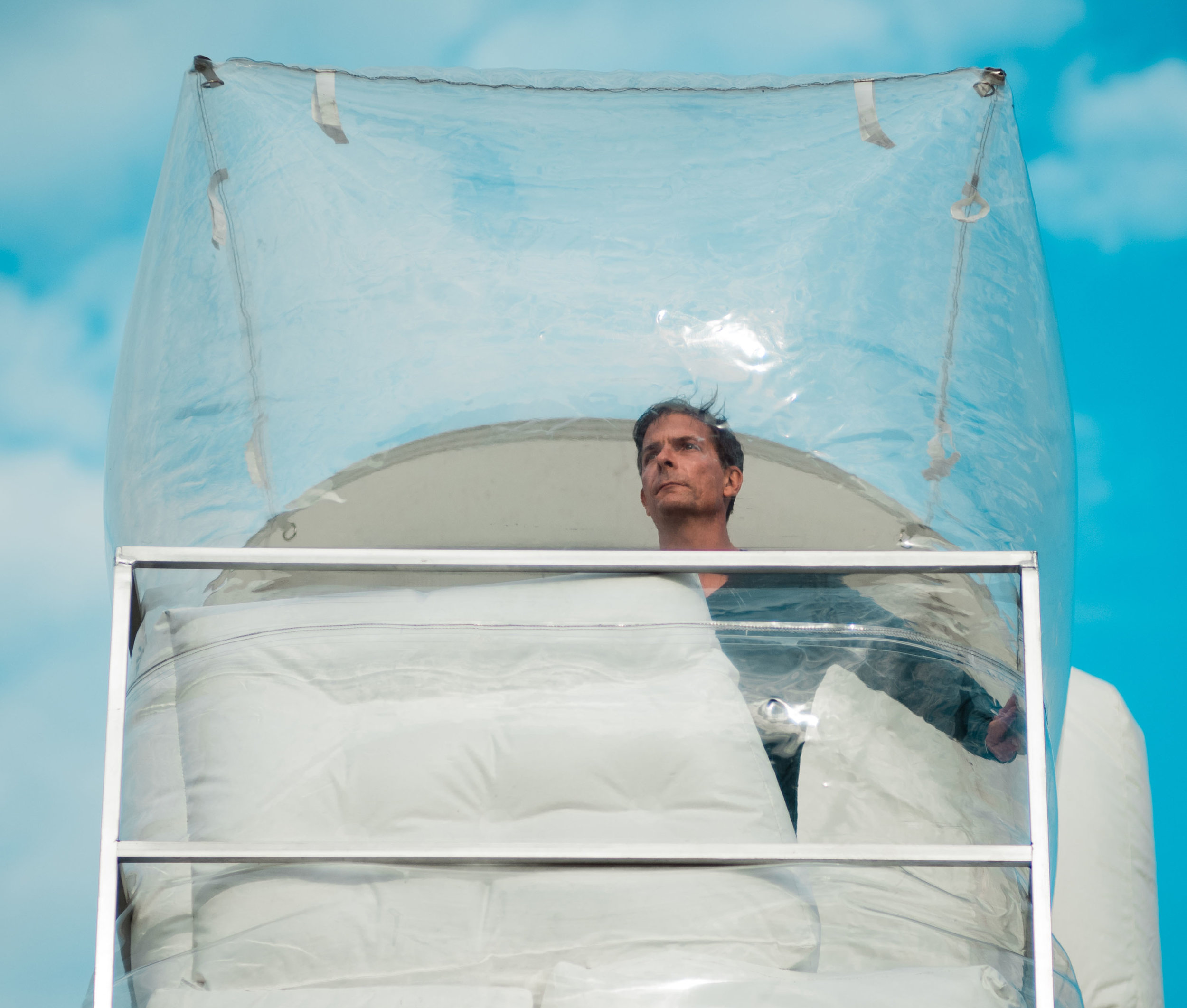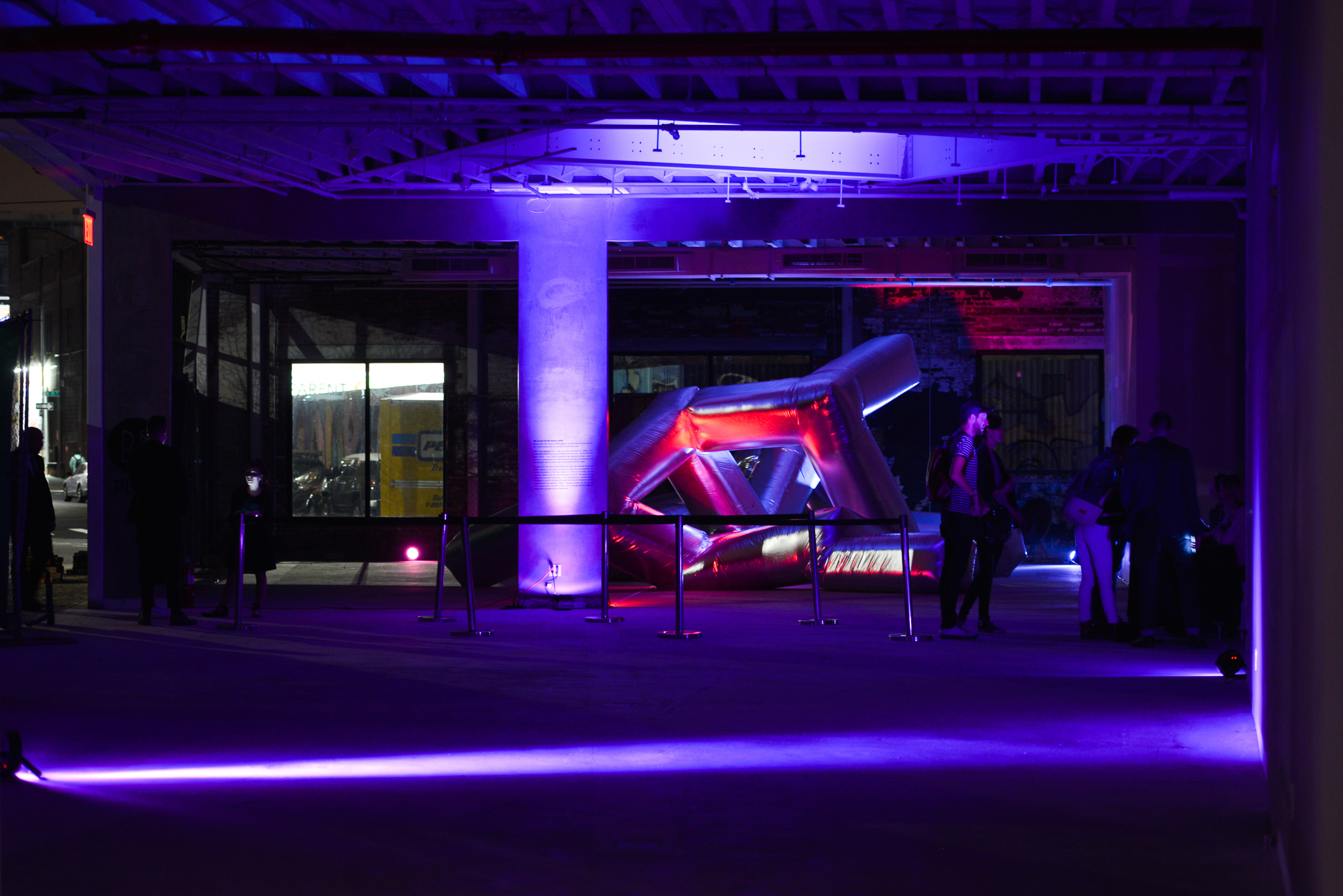We meet New York based Alex Schweder and discuss the resonances he finds between performance art and architecture.
Blue sky thinking: artist and architect Alex Schweder testing out his "The Hotel Rehearsal" installation at the A/D/O design space in Brooklyn.
Performing Architecture: the art of Alex Schweder
New York based artist Alex Schweder started out working as an architect – receiving a PhD in that subject from the University of Cambridge – but has gradually developed an interdisciplinary creative practice all his own, incorporating elements of architecture and performance art. Schweder has exhibited his work widely on an international level, including London's Tate Britain, New York’s Sculpture Center, Berlin’s Magnus Muller, and San Francisco Museum of Modern Art, among many others. Recently, Schweder exhibited several of his works at the second edition of our Future Series of immersive installations and experiences at the new A/D/O design space in Brooklyn. We speak with Schweder below about forming his own artistic practice, the resonances between performance and architecture, and more.
| CONTRIBUTOR |
| Photos: Sylvain Tron |
You started out studying architecture but ended up in art – how did you became interested in both fields? Was there a frustration to the limits of architecture, for instance?
Alex Schweder: My thoughts on interdisciplinary practices, such as mine, are that there should be benefits for both disciplines. Architecture and performance art are the two fields I find productive to merge. While I was trained as an architect, I was attracted to the thinking found in performance art about everyday actions; the same actions that are framed and produced by buildings. In performance art these events are used as a medium just as painters use paint to express their ideas. Architecture on the other hand tends not to interrogate them as playfully. Through combining these fields, a third thing happens… both become more nuanced. Performance artists can practice outside of institutions in the everyday sites they reference. Architects gain a broader scope, to work with actions as gymnastically as they do with form.
I’m really intrigued by your notion of “performance architecture”. How did you develop it?
I began using the term “Performance Architecture” in 2007 to describe what I do. Works like “Rope Piece” (1983-4) by Linda Montano and Tehching Hseih, “Seed Bed” (1972) by Vito Acconci, and “Imponderabilia” (1977) by Marina Abramovic all use architectural elements – like a floor or a doorway – as necessary parts of the performance. Since there was such an easy resonance between performance and architecture, I decided to explore what architecture would mean if layered with this thinking. I came to these ideas in a kind of oblique way… before this time I was interested in making architecture that emulates the body I have, and not the body I idealise. This means an architecture that changes over time. I’d say this was my eureka moment, I understood this time based thinking to be a performance.
““I was attracted to the thinking found in performance art about everyday actions; the same actions that are framed and produced by buildings.””
Schweder immersed in his "Friable Aperture" installation.
Setting up "The Sound And The Future"
"The Sound And The Future" at A/D/O. Photo by Ari Joseph from A/D/O
You had three works recently on show at the new A/D/O design space in Brooklyn, as part of our Future Series installation events: what are the works about and how did they interact across the space?
The privilege of participating in #TheFutureSeries was to bring these three works together and let them speak to one another. "The Sound And The Future" is an inflatable work that takes up an entire room set to the soundtrack of an early techno track. It moves slowly, almost butoh like, somewhere between the speed of a building and body. It has never sounded as good as it did on the A9 speaker on which the soundtrack was played. The Hotel Rehearsal is also inflatable and mobile. This little hotel room pops 30 feet out of the back of a van and rehearses “hotels” wherever it stops. At A/D/O it was parked in such a way that when it was lifted by the scissor lift, the New York City skyline appeared over the parapet of the building across the street as though it had been submerged in water that was quickly draining away. "Friable Aperture" was all water, mist to be precise, installed in a vast dark room with three projections of simple architectural forms turning from windows to doors to rooms. Visitors were invited to touch the mist and light, enter it as if it were architecture, though they would find nothing solid.











